|
More Tendon Facts:
Tenosynovitis is a condition affecting the sheath that surrounds a tendon. In many cases, the sheath encounters tearing due to inflammation of the underlying tendon. The majority of tenosynovitis sufferers are female.
A fully ruptured Tendon REQUIRES surgery. It will not heal on its own.
Except for a fully ruptured tendon, Tendonitis can almost always be cured without surgery.
Left untreated, tendonitis can be extremely debilitating and lead to life long complications.
Continually using your Tendon while it is injured will lead to a worse injury.
To Heal as fast as possible use conservative treatment options at home such as: Rest
Use an Ice Pack to Get Swelling Down
Use a TShellz Wrap at Home Once Swelling is Down
Stretch at Home Once Your PT or Doctor Approves
Treat the Injury Well Beyond the Point After the Pain Disappears
| Strain or Sprain..
What is the Difference?
What is a Sprain?
A sprain is a stretch and/or tear of a ligament (fibrous band of connective tissue that joins bone to bone). Every joint in the body is stabilized and supported by a ligament. They help control range of motion and enabling us to complete simple tasks such as walk and run.
Ligaments
Ligaments are fibrous bands of tissue that connect the end of 1 bone to another. Ligaments are usually only found around major joints in the body, with the hand and foot containing the most number of ligaments. If you have a ligament injury you'll usually feel pain in the injured area as well as swelling and inflammation. If you have injured a major ligament in a joint (ie. the knee has 4 major ligaments - the Anterior Cruciate Ligament [ACL], Posterior Cruciate Ligament [PCL], Lateral Collateral Ligament [LCL], Medial Collateral Ligament [MCL]) then you may also feel instability in that joint as one of the major ligaments connecting your bones together is injured or ruptured.
Immediate ligament injury treatment usually consists of icing the area for the first 48 hours, gently returning to activity after a few days and taking non-steroidal anti-inflammatory drugs (NSAIDs) (reference: 1).
What is a Strain?
A strain is an injury of a muscle and/or tendon. Tendons (fibrous cords of tissue that attach muscles to bone).
Sprains and strains are among the most common injuries in sports, professional, amateur athletes and the general public. You are more at risk for the injury if you have a history of sprains and strains, are overweight, and are in poor physical condition.
Sprains and strains are categorizes according to severity:
- MILD - A ligament or muscle is stretched in a mild sprain, but there is no joint loosening.
- MODERATE - A moderate sprain partially tears the ligament or muscle, producing joint instability, and some swelling.
- SEVERE - A severe sprain produces excruciating pain at the moment of injury, as ligaments or muscle tear completely, or separate from the bone. A complete rupture makes the joint nonfunctional and will generally require some form of surgery.
You should seek medical attention if you can't walk more than four steps without pain, can't move the affected joint and you have numbness in any part of the injured area.
SPRAIN
What are the signs of a sprain?
While the intensity varies, pain, bruising, swelling, limited ability to move the affected joint, and inflammation are common to all three categories of sprains: mild, moderate, and severe. You may feel a tearing or hear a 'pop' sound in the joint.
What causes sprains?
A sprain is caused by direct or indirect trauma (a fall, a blow to the body, etc.) that knocks a joint out of position, and overstretches, and, in severe cases, ruptures the supporting ligaments. This injury occurs when an a person lands on an outstretched arm; slides into a base; jumps up and lands on the side of the foot; or runs on an uneven surface.
Common Sprains
Sprained Ankle
You can get a sprained ankle if your foot twists, rolls or turns beyond its normal motions. Your ankle can also get sprained if you plant your foot unevenly on a surface, beyond the normal force of stepping. Approximately 25,000 people suffer the pain of an ankle sprain every day (reference: 1).
The foot and ankle is made up primarily of ligaments holding the bones together. There are 7 ankle related sprains; high ankle, lateral, inversion, eversion, syndesmosis, anterior talofibular ligament, and anterior inferior tibiofibular ligament sprains! Sports related to high risk ankle sprains, are ones that require sudden changes in direction, like football, soccer, and basketball and basketball.
Knee Sprain
There are 4 major ligaments in the knee:
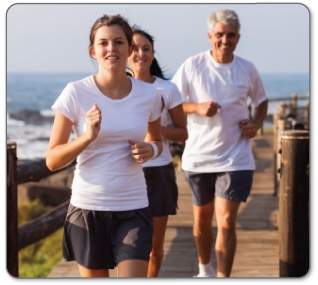 - Anterior cruciate ligament (ACL) and posterior cruciate ligament (PCL) bridge the inside of the knee joint, forming an "X" pattern that stabilizes the knee against front-to-back and back-to-front forces. A sudden stop; a twist, pivot or change in direction at the joint; extreme overstraightening (hyperextension); or a direct impact to the outside of the knee or lower leg. Knee sprain injuries are seen among athletes in football, basketball, soccer, rugby, wrestling, gymnastics and skiing.
- Medial collateral ligament (MCL) supports the knee along the inner side of the leg. Like the ACL, the MCL can be torn by a direct sideways blow to the outside of the knee or lower leg, the kind of blow that can happen in football, soccer, hockey and rugby. The MCL can be injured by a severe knee twist during skiing or wrestling, particularly when a fall twists the lower leg outwards, away from the upper leg.
- Lateral collateral ligament (LCL) supports the outer side of the knee. It is the least likely knee ligament to be sprained because most LCL injuries are caused by a blow to the inside of the knee, and that area usually is shielded by the opposite leg.
More than any other group, competitive athletes have a very high risk of knee sprains and other types of knee problems.
Wrist Sprain
A sprained wrist is often caused by a fall onto an outstretched hand. The force of the impact bends the wrist back toward your forearm, stretching the ligaments that connect the wrist and hand bones a little to far. As this happens during a fall, it is know to frequently occur during sports and outdoor recreation. Wrist sprains are common with basketball, baseball, gymnasts, divers, skiers (especially when they fall while still holding a pole), skaters, skateboarders, and inline skaters
Finger Sprain
A sprain in the finger can occur to one or more of the three joints of the fingers. This often happens in sports by 'jamming' the finger into an opponent or being hit on the tip of the finger by a ball. Bending the finger backward (hyperextended finger). Often these injuries are overlooked as it is 'just a finger' after all... yet finger injuries can be very painful and lead to chronic ailments (trigger finger) if not treated correctly.
Toe Sprain
A sprained toe often happens pretty much exactly the way you think it does - by stubbing your toe into something, stopping suddenly when running or landing awkwardly from a jump 'jamming' your toe into your shoe. Toe sprains are common in sports such as football, soccer, rugby, basketball and running.
STRAIN
What are the signs of a strain?
Signs include pain, muscle spasm, muscle weakness, swelling, inflammation, limited ability to move the affected muscle, and cramping. With a mild strain, the muscle/tendon is stretched or pulled, slightly. Some muscle function will be lost with a moderate strain, where the muscle/tendon is overstretched and slightly torn. In severe strains, the muscle and/or tendon is partially or completely ruptured, often disabling the person.
Common Strains
- Achilles tendon strain. If you are experiencing a strained achilles, you will typically have pain along the back of your foot and above your heel, especially when stretching your ankle or standing on your toes. Most strains are mild but can persist and evolve into something more serious if adequate rest is not taken. The larger the strain is, the more it will affect your walking. A suddenl increase in activity or improper warmups can cause an Achilles tendon strain. Trying to go fast, jumping (hurdles), cutting (football) or twisting in the air are just some of the scenarios where you could develop Achilles tendon strain. To read more about Achilles tendon strain, click here (aidmyachilles.com)
- Back strain. When the muscles that support the spine are twisted, pulled, or torn, the result is a back strain. Athletes who engage in a lot jumping (during basketball, volleyball, etc.) are at risk to this injury. Everyday activities can lead to back strain, pickup a heavy item and twisting at the same time as in loading groceries into the car, carrying laundry up stair and turning too quickly.
- Hamstring muscle strain. A hamstring muscle strain is a tear or stretch of a major muscle in the back of the thigh. The injury can sideline a person for up to six months. The likely cause is muscle strength imbalance between the hamstrings and the muscles in the front of the thigh, the quadriceps. Kicking a football, running, or leaping to make a basket can pull a hamstring. Hamstring injuries tend to recur. To read more about the Hamstring strain click here (aidyourhamstring.com)
- Quadricep strain. This is muscle strain in the area of the front thigh (quadriceps muscles in the front, and the adductor muscles on the inside). The hamstring and quadriceps muscle groups are particularly at risk for muscle strains because they cross both the hip and knee joints and are responsible for exerting and handling a LOT of force. They are also used for high-speed activities, such as track and field events (running, hurdles, long jump), football, basketball, and soccer. To learn more about quadricep strains/tendinitis, click here
- Calf strain. This happens when there are stretches, tears, or incomplete ruptures of the large calf muscle (gastrocnemius) - the muscle extending down the back of the leg. Calf strain (also known as 'Tennis leg') happens when lunging or pushing off one leg to get to a wide ball or serve. May also happen with daily activities, such as running to catch a bus or climbing stairs. It feels like being kicked in the leg from behind. The tennis leg sufferer feels an quick severe sharp pain, turns around to see who kicked them, only to discover that no one is there. To read more about Tennis Leg, click here
- Elbow strain. A strain is when a muscle becomes overstretched and tears. This painful injury, also called a "pulled muscle," can be caused by an accident, improper use of a muscle, or overuse of a muscle. Frequently occur in racquet, throwing, and contact sports.
- Shoulder strain. Your shoulders are the most movable joints in your body. Overuse, repetitive motion or an unnatural twisting of the shoulder are causes of shoulder strain. Quite often the due to swelling, which can make almost any movement in the cavity of the shoulder joint both difficult and uncomfortable.
- Hand strain. Repetitive strain injuries are linked with work related usage of the hands. A tight grip or squeezing the hand overstretches the hand muscles. Women are at high risk as 'standard' hand tools are often too large, too wide or too slippery. Sports such as gymnastics, tennis, rowing, golf-sports that require extensive gripping-have a high rate of injury.
- Neck strain. Neck strain is generally not considered a serious injury, but if it persists, go see your physician. The causes of neck strain are typically too much time in an awkward position (hunched over a steering wheel while driving, hunched forward to view a computer monitor, or cradling a phone in the crook of the neck). Sleeping in a position that strains the neck (such as with a pillow that is too high or too firm) or carrying a heavy suitcase or other object on one side of the body can also cause neck strain.
Product Advisors are available 9:00 am to 5:00 pm Eastern Standard Time Monday to Friday.
Learn More About Tendon Injuries & TreatmentsI want to learn more about Post-Surgery Recovery I want to learn more about TShellz Wrap® Circulatory Boost I want to learn more about Ice & Heat: Which Is Better For Treatment? I want to learn more about Tendonitis Treatments I want to learn more about Tendonitis Surgery
FREE SHIPPING ON ALL PRODUCTS CURRENTLY ENABLED
60 DAY TRIAL PERIOD
During your recovery, you will probably have to modify and/or eliminate any activities that cause pain or discomfort at the location of your soft tissue injury until the pain and inflammation settle. The more diligent you are with your treatment and rehabilitation, the faster you will see successful results!
|
Tendon Injury Facts:
When the tendon gets inflamed it is known as tendonitis, and when the tendons are chronically overused, it may lead to microscopic tears in the collagen matrix and causes a gradual weakening of the tissues.
Achilles tendonitis is a common injury among runners, as the Achilles tendon is responsible for helping you lift off the ground with each stride.
As computers become ever more important elements of the work place and everyday life, incidents of wrist tendonitis are on the rise.
Oral Medications can mask the pain but do not aid in the healing of tendonitis. Anti-inflammatories and pain killers can mask the pain and indirectly cause tendonitis to worsen.
Ice and Compression treatments are the easiest and most effective treatments for tendonitis.

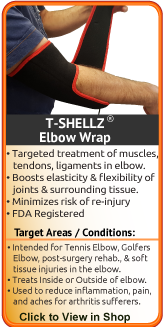

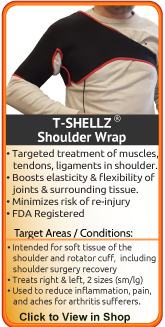

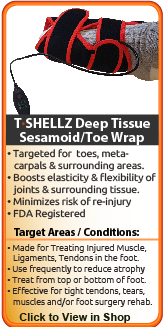
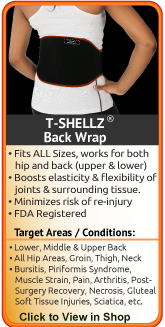

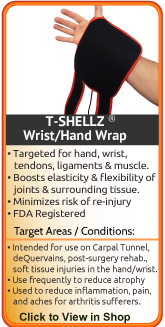
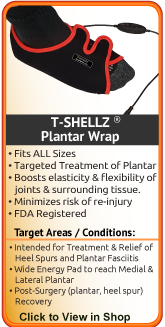

|





















